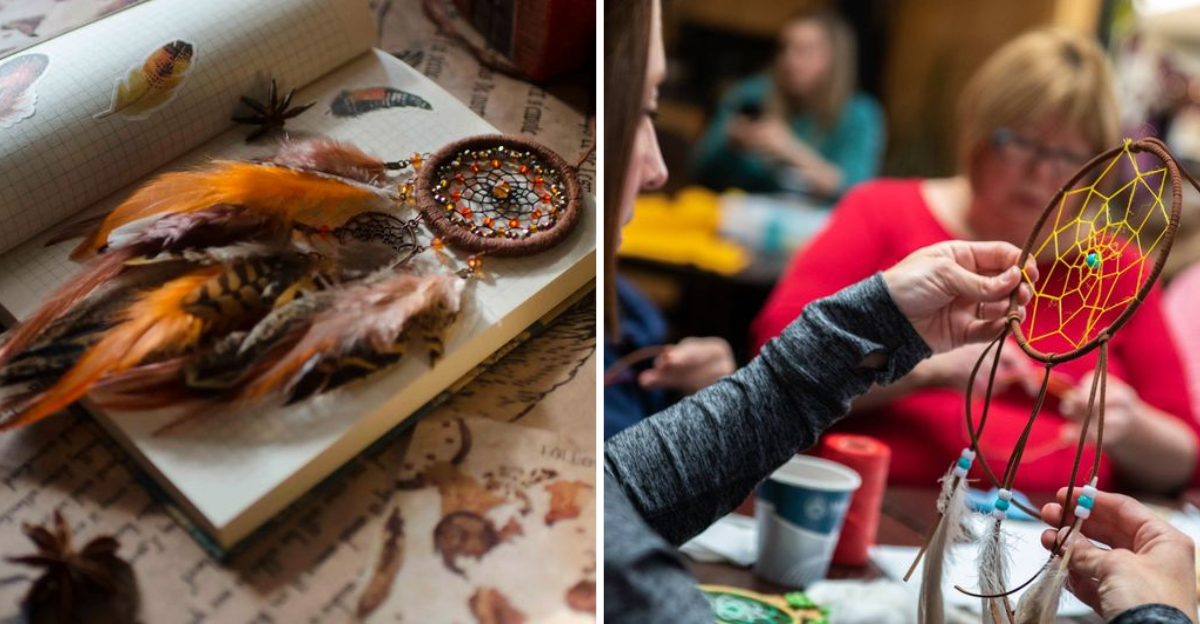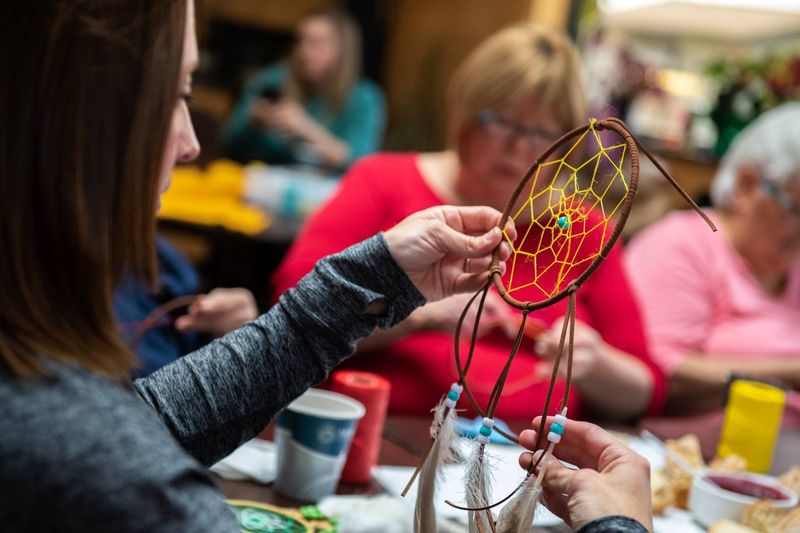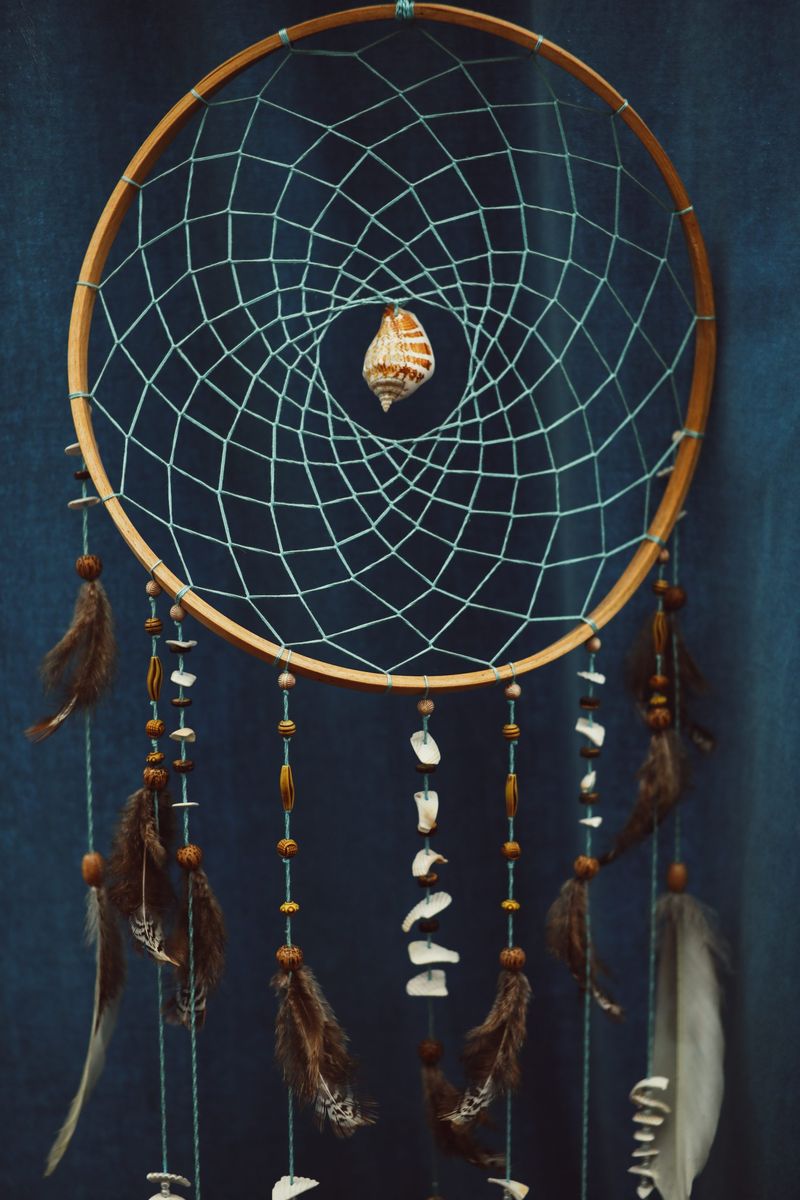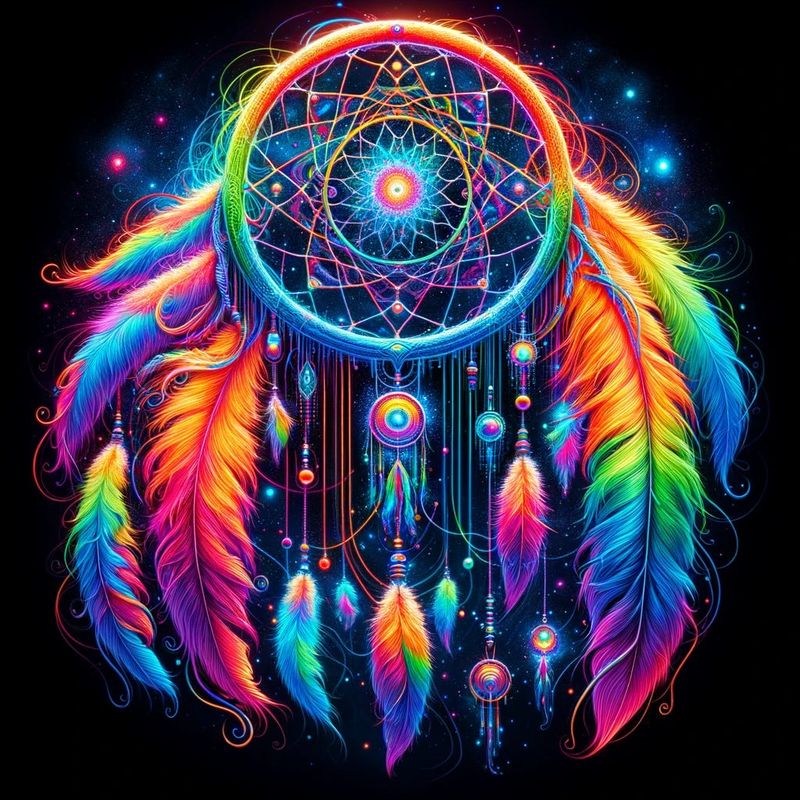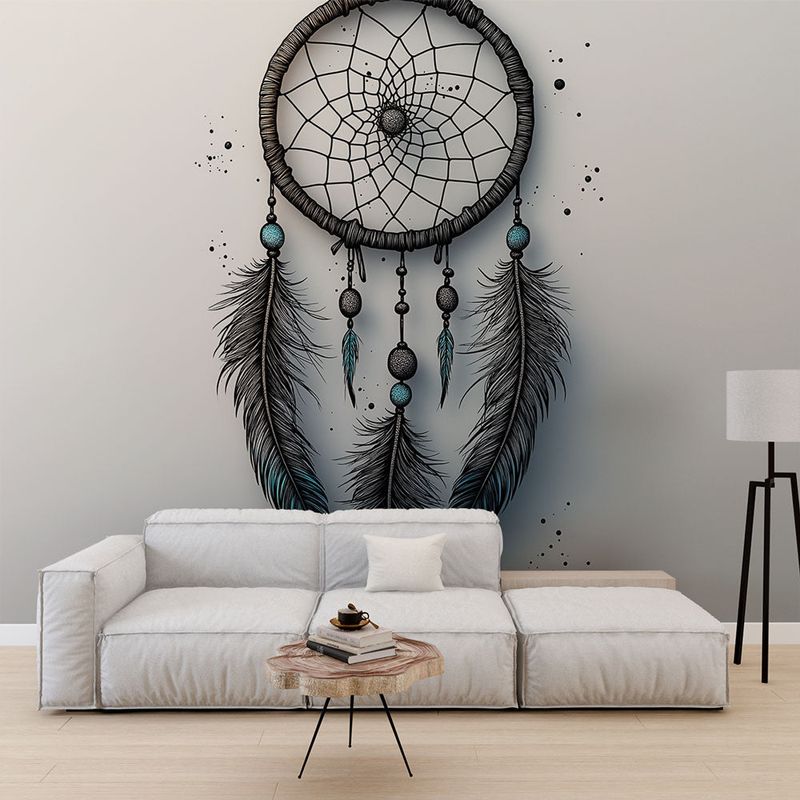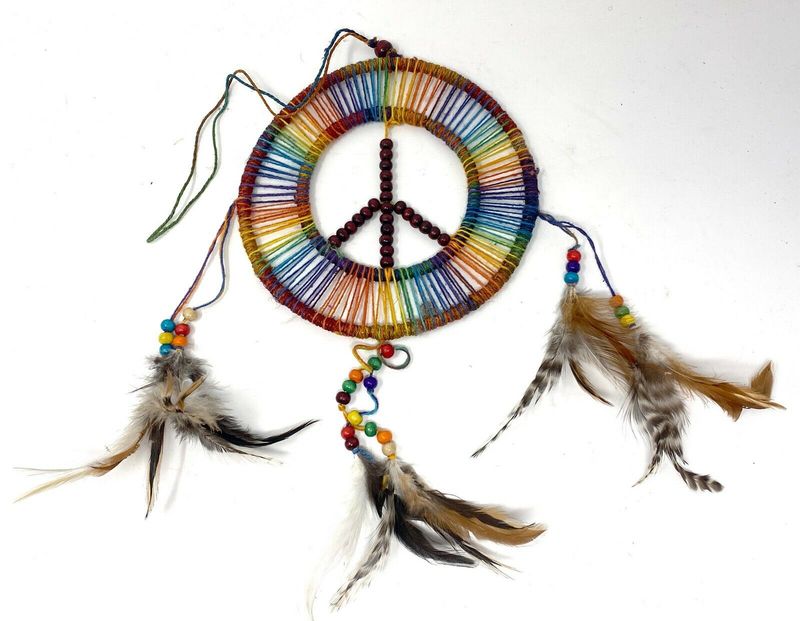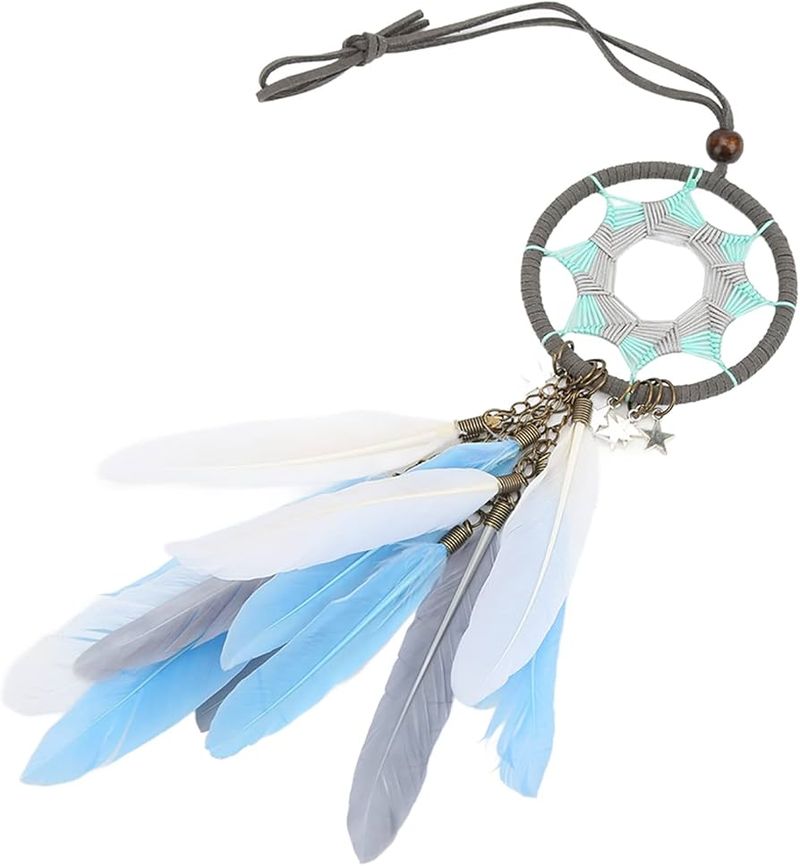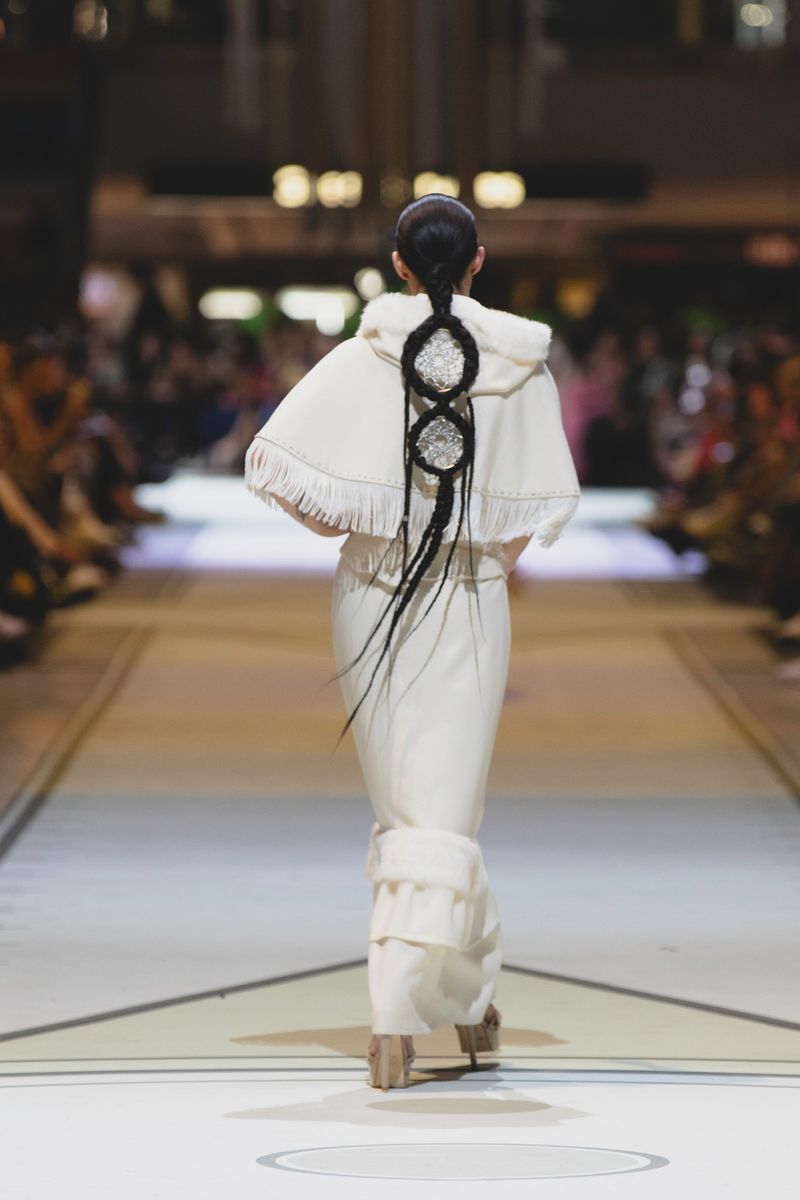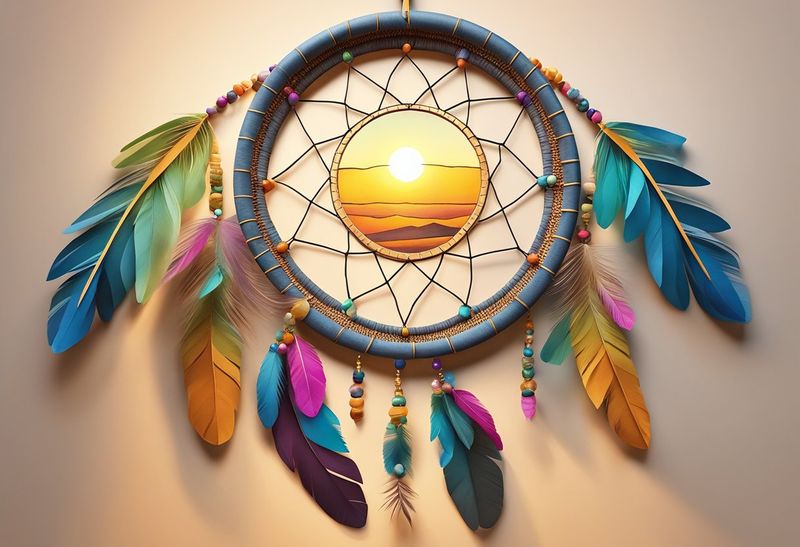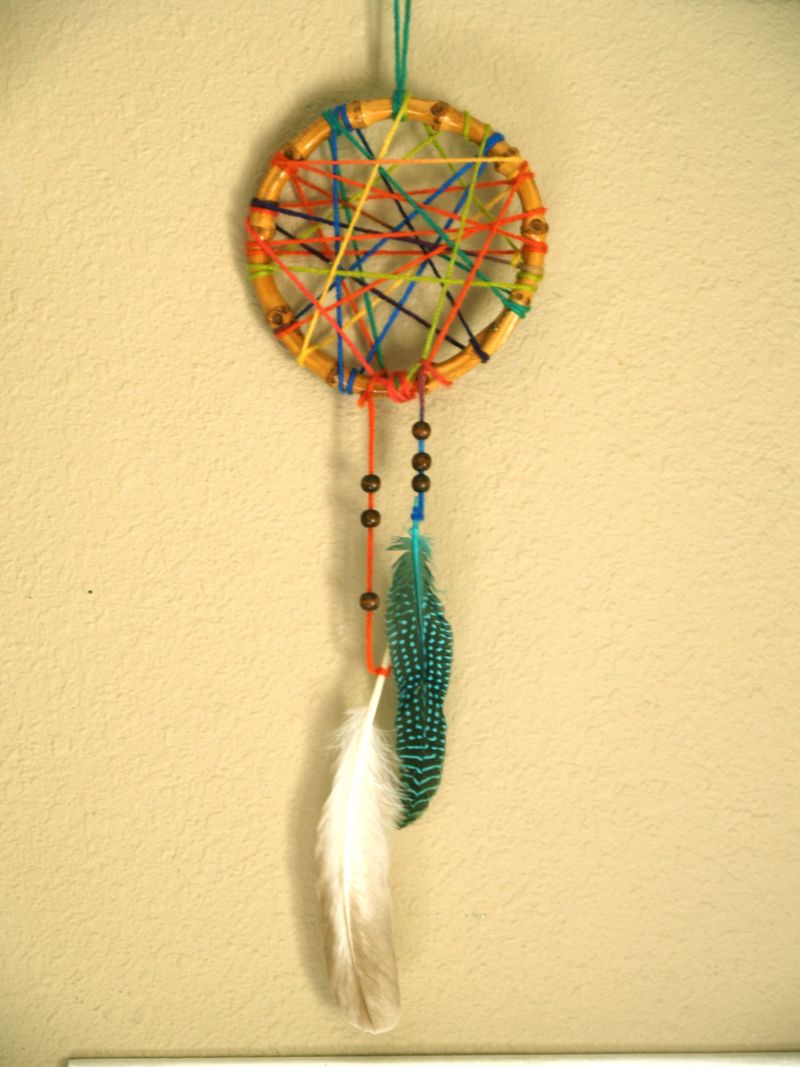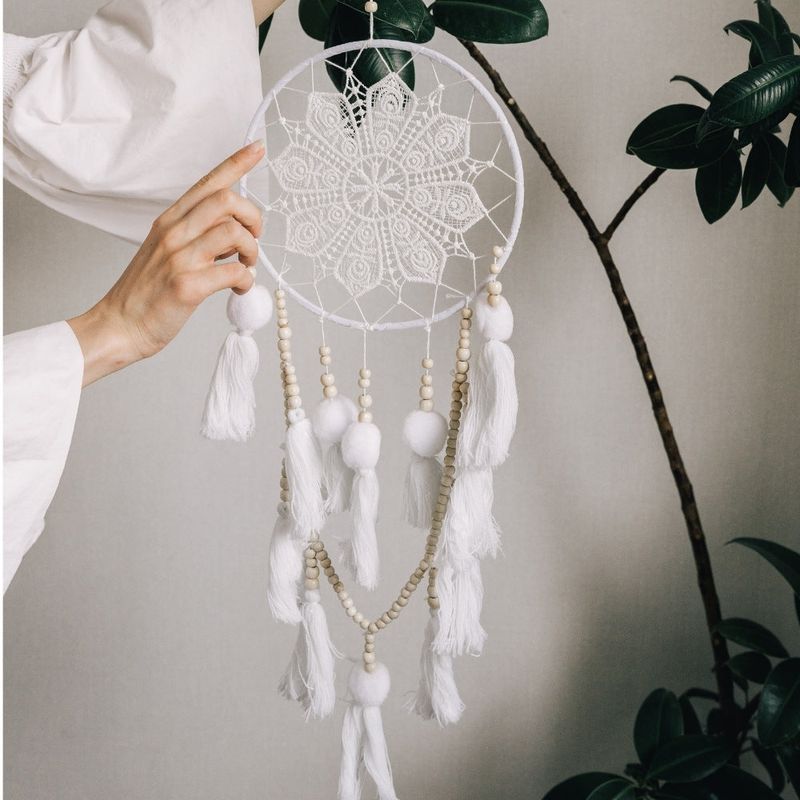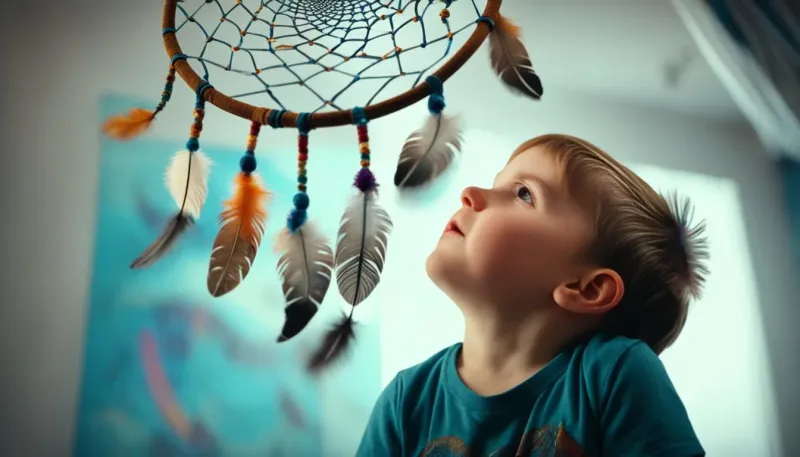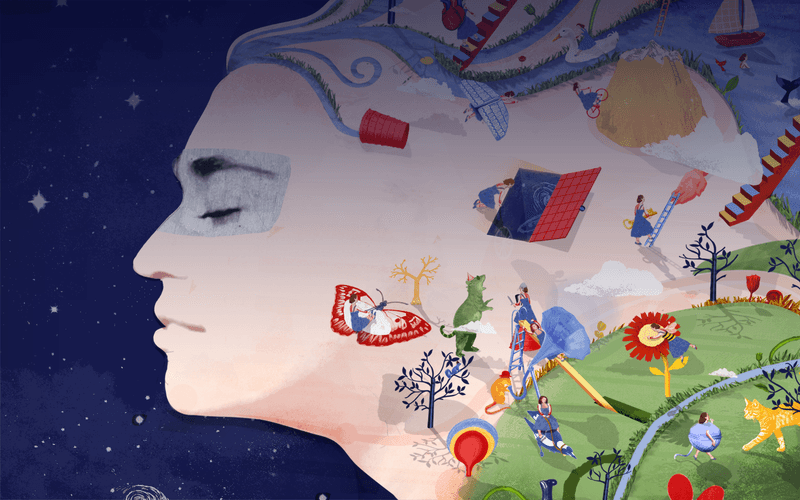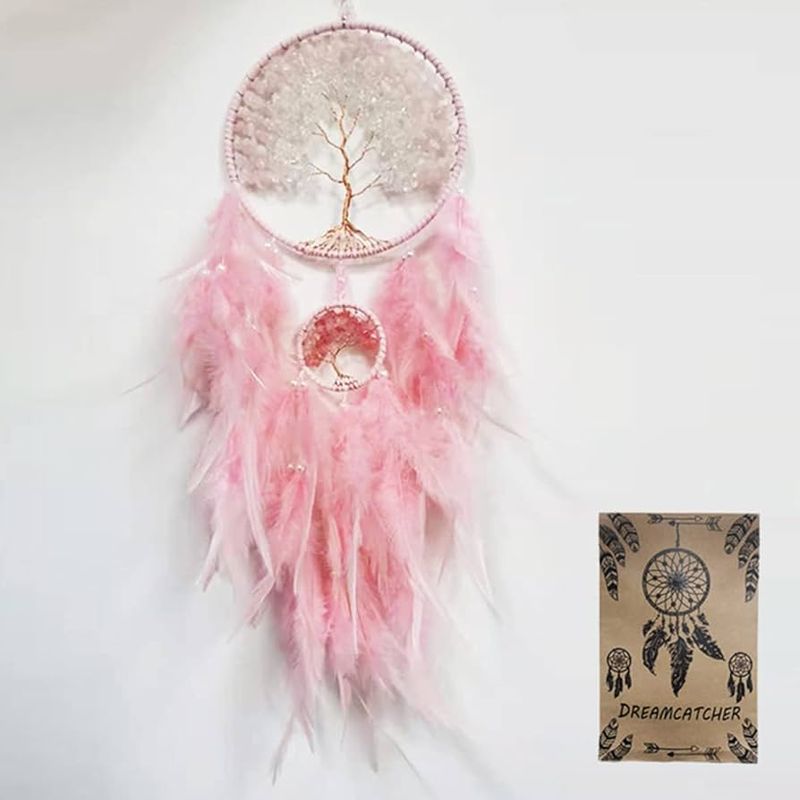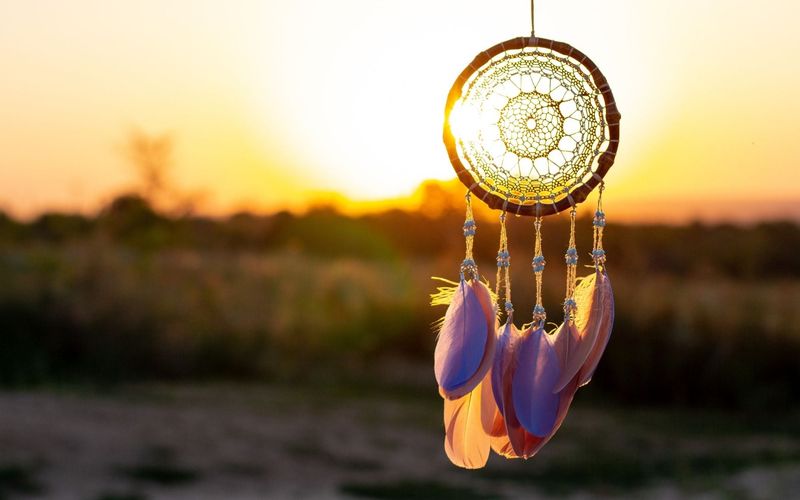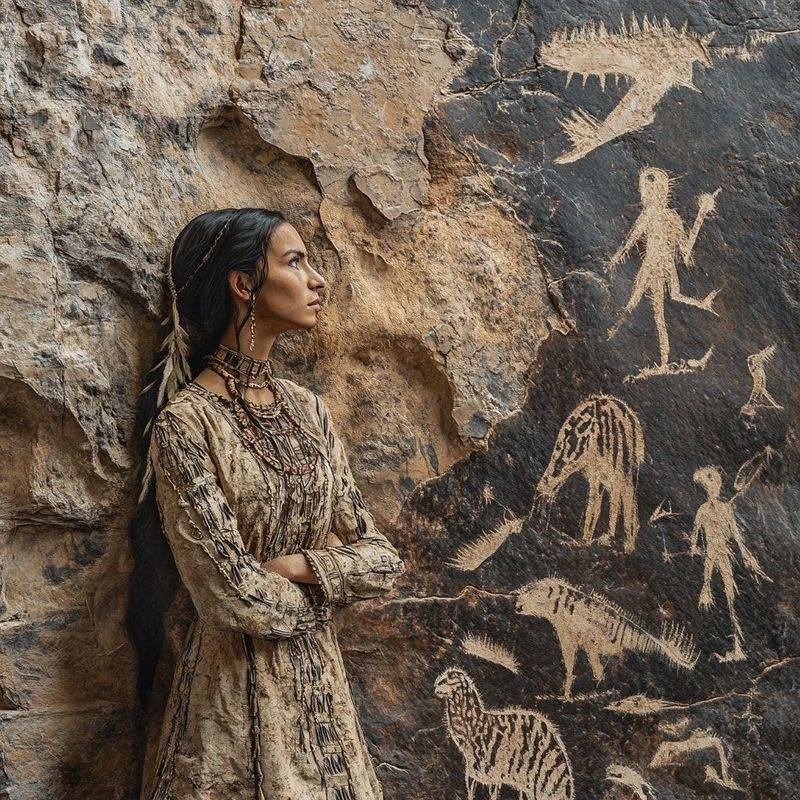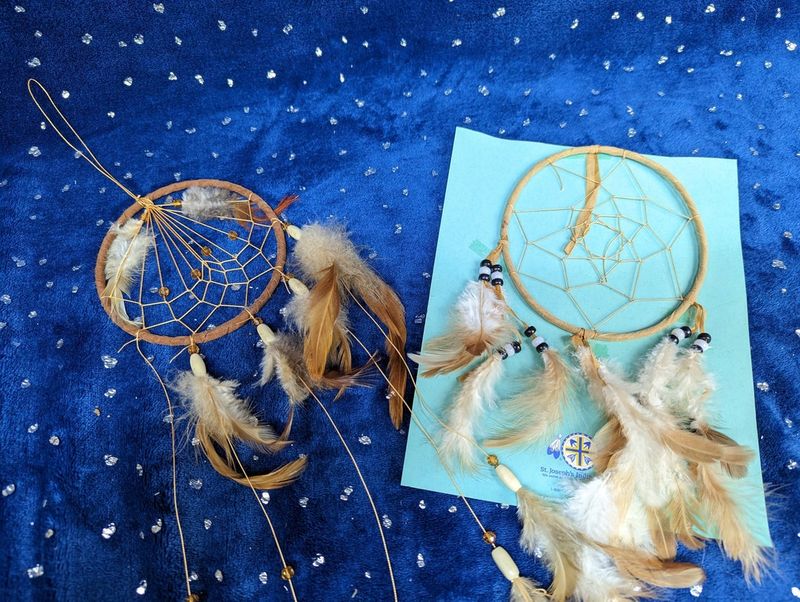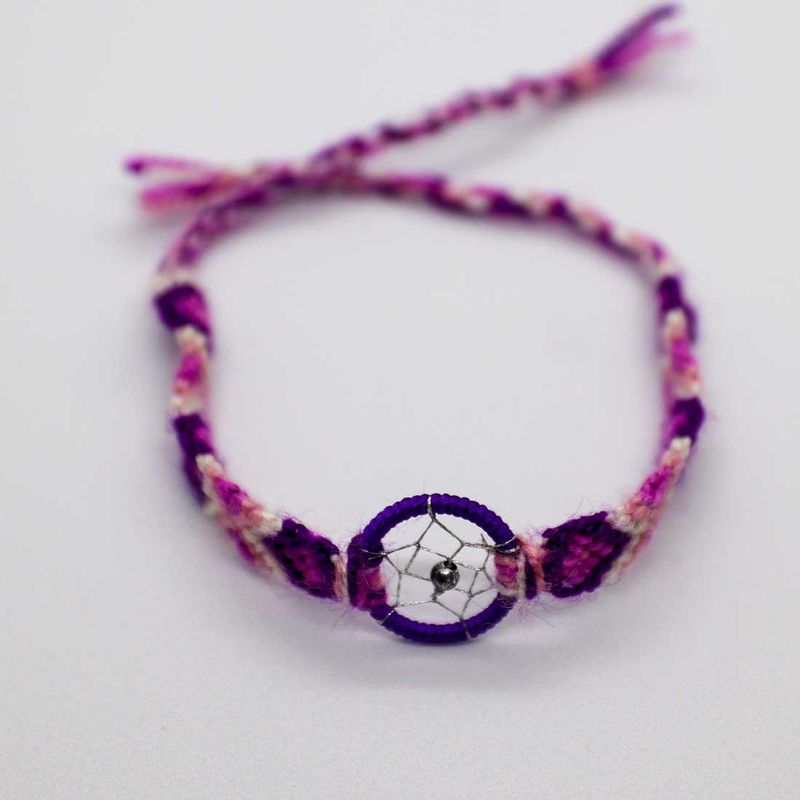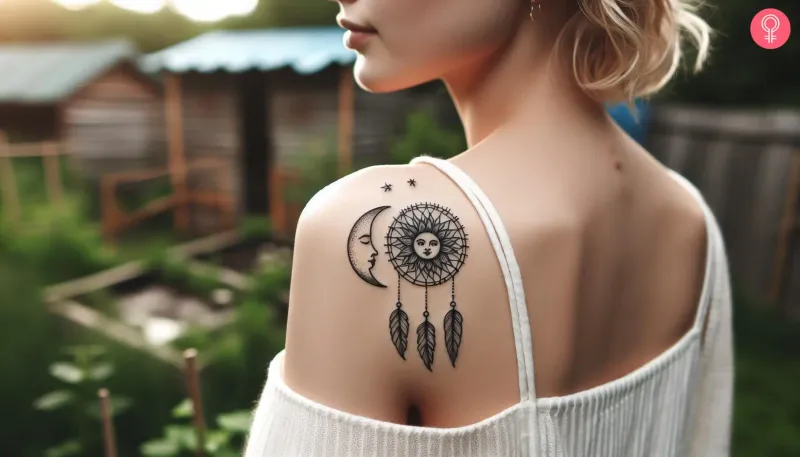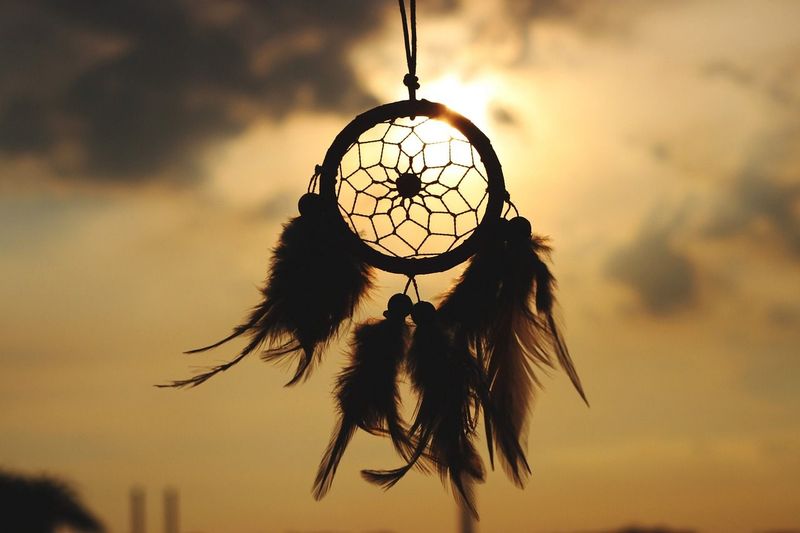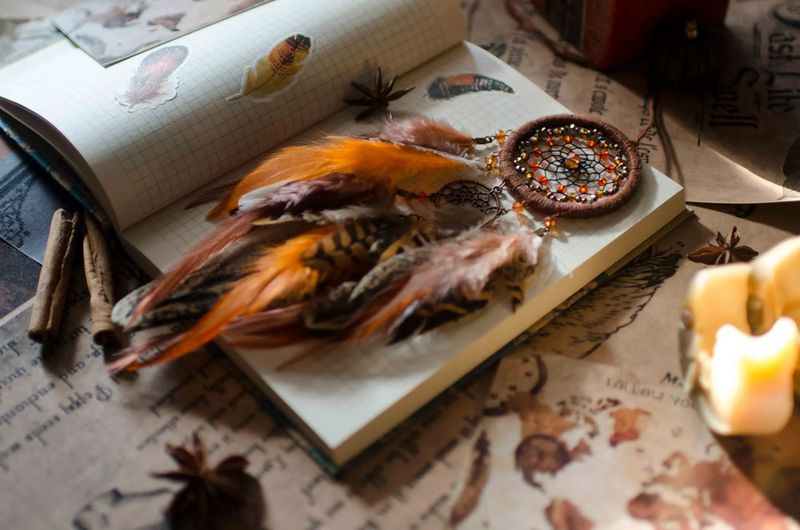Dreamcatchers, with their intricate webs and hanging feathers, have captured the imaginations of many across the globe. Originally rooted in Native American culture, these beautiful artifacts were believed to protect slumbering individuals from negative dreams, allowing only positive visions to pass through. Over time, dreamcatchers have transcended their spiritual origins to become popular decorative items, each role as unique as the designs themselves. This article explores 20 fascinating roles that dreamcatchers play in today’s world, from spiritual guardians to artistic expressions, and everything in between. Join us as we discover the multifaceted purposes of these enchanting symbols.
Cultural Heritage
Dreamcatchers are deeply rooted in Native American culture, serving as a symbol of protection and cultural heritage. Typically crafted from natural materials like wood, sinew, and feathers, they are believed to filter dreams, allowing only positive ones to pass through. Historically, dreamcatchers were often given to young children to hang above their cradles. This tradition emphasized the importance of safeguarding the innocence and well-being of the youth. Today, they remain a testament to the rich cultural legacy and spiritual beliefs of the Indigenous peoples.
For many, owning a dreamcatcher is a way to honor this profound heritage.
Spiritual Guardians
Dreamcatchers serve as spiritual guardians, a role that resonates with many who seek protection in their sleep. The intricate web is designed to catch negative energies and nightmares, preventing them from disturbing the sleeper. While this belief originates from Native American traditions, it has found a place in the hearts of those from diverse backgrounds. The idea of spiritual guardianship offers comfort and reassurance, creating a peaceful atmosphere conducive to rest.
Incorporating a dreamcatcher into a sleeping space can inspire a sense of security and well-being for restful nights.
Artistic Expressions
In today’s world, dreamcatchers have become a canvas for artistic expression. Artists often experiment with different materials, colors, and patterns to create unique interpretations of this traditional symbol. From minimalist designs to elaborate, colorful webs, dreamcatchers showcase the creativity and individuality of their makers. This artistic evolution has allowed dreamcatchers to transcend their original purpose.
Adorning walls or serving as statement pieces, they offer a blend of art and tradition, appealing to those who appreciate craftsmanship and cultural significance. Dreamcatchers have become a beloved form of home decor that tells a story.
Modern Decor
Dreamcatchers have found a new role in modern decor, seamlessly blending tradition with contemporary design. These beautiful artifacts have become popular decorative items, adding a touch of whimsy and cultural richness to any space. Whether in living rooms, bedrooms, or outdoor patios, dreamcatchers offer a versatile aesthetic appeal. Their presence can evoke a sense of tranquility and spiritual connectivity.
Incorporating a dreamcatcher into home decor not only enhances visual appeal but also serves as a conversation starter, inviting discussions about its history and symbolism in a modern context.
Symbol of Peace
Dreamcatchers are often seen as symbols of peace and tranquility. Their gentle sway and delicate design evoke a sense of calm, making them ideal for creating serene environments. Many individuals incorporate dreamcatchers into meditation areas or gardens to enhance the peaceful ambiance. The symbolism of capturing negative energies and fostering positive dreams aligns with the broader desire for inner peace.
By integrating dreamcatchers into spaces intended for relaxation and contemplation, one can cultivate an atmosphere of harmony and reflection. They serve as gentle reminders of the beauty in stillness.
Gift of Goodwill
Giving a dreamcatcher as a gift is a gesture filled with goodwill and positive intentions. It symbolizes a wish for the recipient’s protection and happiness, making it a meaningful present for various occasions. From birthdays to housewarmings, a dreamcatcher can convey a message of care and thoughtfulness.
Handmade dreamcatchers, in particular, offer a personal touch, reflecting the giver’s dedication and creativity. This act of gifting not only strengthens bonds but also shares the dreamcatcher’s rich cultural significance, spreading its protective charm beyond the realm of tradition.
Cultural Fashion
In the realm of fashion, dreamcatchers have inspired a variety of accessories, from jewelry to clothing designs. Embracing this trend allows individuals to carry a piece of cultural symbolism with them, turning traditional motifs into personal style statements. Dreamcatcher-themed necklaces, earrings, and bracelets are especially popular, providing a unique blend of elegance and heritage.
This fusion of fashion and tradition not only highlights the dreamcatcher’s aesthetic appeal but also sparks conversations about its origins and meanings. As wearable art, dreamcatchers continue to inspire creativity and cultural appreciation.
Educational Tools
Dreamcatchers serve as educational tools, offering insights into Indigenous cultures and their traditions. Many educators incorporate dreamcatcher crafting into their curriculum to teach students about cultural diversity and history. This hands-on activity fosters appreciation for Native American heritage while encouraging creativity and artistic skills.
Through the process of crafting, students gain a deeper understanding of the dreamcatcher’s symbolism and purpose. These educational experiences promote cultural awareness and respect, bridging gaps between different communities. As a learning tool, dreamcatchers provide an engaging way to explore complex cultural narratives.
Therapeutic Crafting
The process of crafting dreamcatchers offers therapeutic benefits, promoting relaxation and mindfulness. Engaging in this creative activity can reduce stress and anxiety, providing a sense of accomplishment and purpose. Crafting sessions often bring people together, fostering community and shared experiences.
These workshops can be particularly beneficial for those seeking a creative outlet or a break from the demands of daily life. By focusing on the intricate details of weaving and design, participants can immerse themselves in a calming, meditative process that nurtures both the mind and spirit.
Personal Empowerment
Dreamcatchers can symbolize personal empowerment and aspiration, especially when customized to reflect individual dreams and goals. Creating or choosing a dreamcatcher with specific colors, shapes, or charms can serve as a personal talisman, inspiring confidence and motivation.
By hanging this personalized dreamcatcher in a prominent place, individuals are reminded of their aspirations and the steps they are taking towards achieving them. This symbolic representation of personal dreams can empower individuals, reinforcing their commitment to personal growth and self-discovery in everyday life.
Cultural Awareness
Dreamcatchers play a vital role in promoting cultural awareness and understanding. Festivals and cultural events often feature dreamcatcher exhibits, where artisans share their knowledge and craftsmanship with the public. These interactions foster appreciation for the dreamcatcher’s origins and the cultural stories they embody.
Through these events, dreamcatchers become more than decorative items; they are mediums for education and dialogue. Visitors gain insights into the cultural significance of dreamcatchers, promoting respect and honoring the traditions from which they originate, thus enhancing intercultural connections.
Storytelling Mediums
Dreamcatchers can be powerful storytelling mediums, inspiring artists and writers to weave their narratives through this symbol. Whether in literature, visual arts, or performances, dreamcatchers are often used to symbolize dreams, protection, and interconnectedness. This makes them ideal for conveying themes of hope and resilience.
Artists may incorporate dreamcatcher motifs in paintings, sculptures, or installations, each piece unraveling a unique tale. By utilizing dreamcatchers in storytelling, creators offer audiences a deeper connection to the themes explored, enhancing the narrative’s emotional impact and cultural resonance.
Spiritual Retreat Enhancements
In spiritual retreats, dreamcatchers are used to enhance the atmosphere, promoting introspection and relaxation. Their presence complements the serene environments intended for meditation, yoga, and personal reflection. Dreamcatchers symbolize the filtering of negative energies, aligning with the retreat’s goals of fostering peace and spiritual growth.
By integrating dreamcatchers into these spaces, participants are encouraged to embrace tranquility and mindfulness. This synergy between environment and symbolism aids in creating a holistic experience, where individuals can immerse themselves fully in their spiritual journey.
Symbol of Hope
Dreamcatchers are powerful symbols of hope and healing, often found in hospitals and healing centers. Their presence can provide comfort to patients and their families, offering a sense of protection and optimism during challenging times. The dreamcatcher’s ability to capture negativity aligns with the overarching theme of recovery and resilience.
In these settings, dreamcatchers serve as gentle reminders that brighter days lie ahead. By fostering a positive environment, they contribute to the emotional and spiritual well-being of those on their healing journey, reinforcing the power of hope.
Cultural Resilience
Dreamcatchers embody cultural resilience, representing the enduring spirit of Indigenous communities. As symbols of resistance and identity, they remind us of the strength and perseverance of cultures that have faced adversities. Community gatherings often feature elders sharing stories of dreamcatchers, emphasizing their importance in preserving cultural heritage.
These narratives not only honor the past but also inspire future generations to embrace and uphold their cultural identities. Dreamcatchers thus become symbols of unity and resilience, celebrating the richness and diversity of cultural traditions amidst challenges.
Healing Rituals
In many Indigenous cultures, dreamcatchers are integral to healing rituals and ceremonies. Shamans and healers use them as tools to cleanse spaces, ward off negative energies, and protect participants during spiritual practices. These rituals highlight the dreamcatcher’s role in connecting the physical and spiritual realms.
Through these ceremonies, individuals seek balance and harmony, drawing upon ancestral wisdom and guidance. The dreamcatcher’s presence amplifies the ritual’s intent, fostering a deeper connection to one’s spiritual path and promoting holistic healing and well-being.
Crafting Community Bonds
Crafting dreamcatchers can foster community bonds, bringing people together in shared creativity and cultural appreciation. Community centers often host workshops where individuals from diverse backgrounds collaborate, promoting inclusion and connection. These gatherings encourage open dialogue and understanding, breaking down cultural barriers.
By creating dreamcatchers together, participants celebrate diversity while building lasting relationships. This collaborative experience highlights the power of art as a unifying force, nurturing a sense of belonging and mutual respect. Through shared creativity, dreamcatchers become symbols of community and collective harmony.
Empowerment for Women
Dreamcatchers can symbolize empowerment, especially within women’s groups that focus on personal growth and strength. These symbols are used to inspire discussions around dreams, aspirations, and overcoming obstacles. In these settings, dreamcatchers represent the weaving of one’s destiny and the pursuit of personal empowerment.
By embracing the dreamcatcher’s symbolism, women find inspiration to navigate life’s challenges and celebrate their achievements. This empowerment journey, supported by the dreamcatcher’s protective and nurturing qualities, fosters confidence and resilience, encouraging women to pursue their dreams with courage.
Cultural Preservation
Museums play a crucial role in preserving the cultural heritage of dreamcatchers, showcasing their historical evolution and significance. Exhibits often feature traditional and contemporary dreamcatchers, highlighting the artistry and cultural narratives they embody. These displays educate visitors about the dreamcatcher’s origins and its role in Indigenous cultures.
By preserving these artifacts, museums contribute to the cultural continuity and appreciation of dreamcatchers. This educational endeavor ensures that future generations understand and respect the rich traditions associated with these symbols, fostering cultural preservation and awareness.
Mindfulness Practices
Dreamcatchers have found a place in mindfulness practices, enhancing the environment for yoga and meditation. Their presence serves as a visual reminder to focus on the present moment, filtering distractions and anxieties. Hanging dreamcatchers in studios or personal practice spaces can inspire a deeper connection to mindfulness.
By incorporating dreamcatchers, practitioners are encouraged to embrace tranquility and inner peace. This symbolic alignment enhances the mindfulness journey, supporting individuals in their quest for balance and clarity. Dreamcatchers thus become allies in cultivating a mindful and centered lifestyle.
